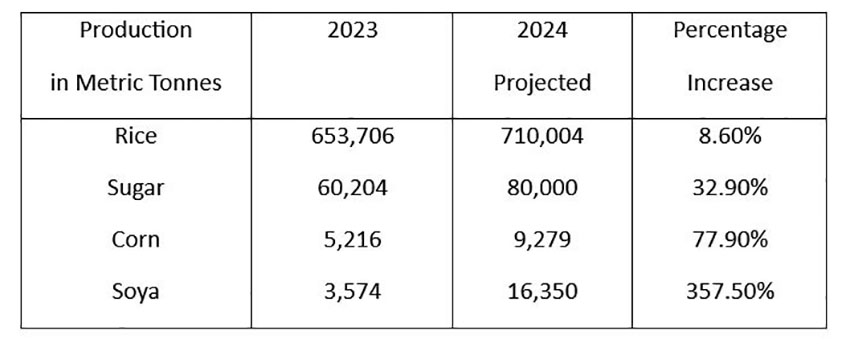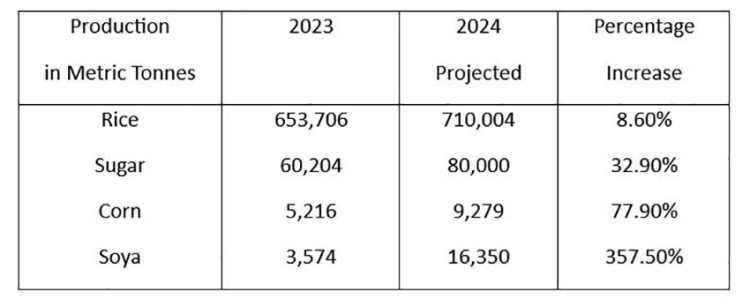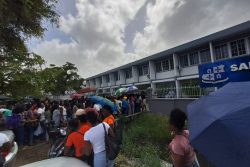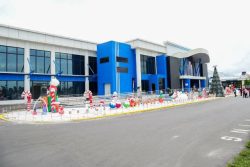Dear Editor,
Endowed with several natural resources (bauxite, gold, diamond, manganese, pristine forest, arable land, and an abundance of fresh water) and now oil, Guyana moves to extract these in a sustainable way, and not only for the benefit of Guyana but also for Caricom. It is within this context that Guyana has taken the regional lead on 3 strategic pillars of the economy: energy, food security, and climate change.
In terms of energy, Guyana whose manufacturing possibilities were hampered by high energy costs and whose population has had to endure not only high electricity costs but also periodic load shedding and blackouts, would soon get important relief from the integrated gas processing facility at Wales. When the electricity and gas plants become operational, the energy cost to consumers would decline by 50%: from $(US) 22 cents per kwh to $(US) 11 cents per kwh. Though the estimated cost of the project is $(US)1.9 billion, that works out to just $(US) 4 cents per kwh (covering all capital and operational costs), and the country would save $(US) 100 million annually.
The PPP/C government’s record on climate change is second to none. Its detailed plan is captured in the Low Carbon Development Strategy (LCDS), 2030. Guyana is Net Zero; thanks to its forest that stores 20 billion tons of CO2, and it also removes 154 million tons of CO2 from the atmosphere each year. Guyana joined 139 countries and signed onto the Net Zero emission by 2050. The funds earned through LCDS are being used for climate mitigation and adaptation, as well as for Amerindian land titles and community development (carbon credits). I would expand on energy and climate change in future articles.
The biggest challenge to the three pillars however is the country’s ambitious 25/25 food security programme along with Caricom, to reduce the value of food imports by 25% by the year 2025. Between 2018-2020 Caricom, for example, imported in value, 60% of its food requirements (in a few countries it was 80%). Recognizing that this level of imports cannot continue, Caricom was able to reduce the value of imports by 12% in 2023 compared with 2022.
To illustrate the progress towards 25/25, the Agriculture Minister of Guyana Zulfikar Mustapha provides figures for Guyana. These are self-explanatory. The rate of increase is substantial.
The production of brackish water shrimps is projected to increase 25% from 958,000 kg in 2023 to 1,200,000 kg in 2024. A multi-million project to cultivate prawns is ongoing at Onverwagt, West Berbice. Much work needs to be done in egg production. The expanding corn production would lead to increased egg production. Guyana imports 53 million eggs annually. In 2023 Guyana produced just 27,000 eggs. By August 24, 2024, it produced 97,000 eggs (3.5 times). Minister Zulfikar expects that within a few years Guyana would become self-sufficient in egg production.
Minister Zulfikar is mindful of ‘El Nino’ weather patterns and has taken measures to mitigate the impact of this on production. The Ministry of Agriculture is building a Hope-like Canal each at No. 51/52 and at Lancaster, which will offer flood protection for over 360,966 acres of farmland and residential areas. The government provides incentives and removes obstacles to growth.
The government grants duty free concessions for machinery and agriculture inputs; upgraded market to farm roads as well as constructing several highways to benefit all Guyanese including farmers; has restored the drainage-irrigation charges and land rentals which the APNU+AFC government increased by more than 4 times (from $(G) 3, 500 to $(G) 15,000) to the original level of $3,500. New methods of agriculture husbandry like hydroponic and shade houses are being implemented. President Dr Irfaan Ali takes more than a personal interest in agriculture expansion and diversification.
To achieve the target of 25 by 2025, a special Ministerial Task Force on Food Production and Food Security (MTF) was established to guide the implementation of VISION 25 by 2025. Ministers of Agriculture in Caricom meet monthly to evaluate the situation. For 2023, the value of food imports was reduced by 12% in Caricom compared with 2022.
Minister Zulfikar expresses optimism that that Guyana and Caricom would attain the objectives of 25 by 2025. And Guyana would never catch the Dutch disease.
Sincerely,
Tara Singh






